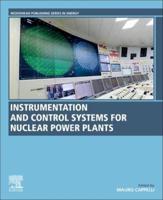Publisher's Synopsis
The earthquake and subsequent tsunami that devastated Japan's Fukushima Daiichi nuclear power station and the earthquake that forced the North Anna, VA, nuclear power plant's temporary shutdown have focused attention on the seismic criteria applied to siting and designing commercial nuclear power plants. Some Members of Congress have questioned whether U.S nuclear plants are more vulnerable to seismic threats than previously assessed, particularly given the Nuclear Regulatory Commission's (NRC's) ongoing reassessment of seismic risks at certain plant sites. The design and operation of commercial nuclear power plants operating in the United States vary considerably because most were custom-designed and custom-built. Boiling water reactors (BWRs) directly generate steam inside the reactor vessel. Pressurized water reactors (PWRs) use heat exchangers to convert the heat generated by the reactor core into steam outside of the reactor vessel. U.S. utilities currently operate 104 nuclear power reactors at 65 sites in 31 states; 69 are PWR designs and the 35 are BWR designs. One of the most severe operating conditions a reactor may face is a loss of coolant accident (LOCA), which can lead to a reactor core meltdown. The emergency core cooling system (ECCS) provides core cooling to minimize fuel damage by injecting large amounts of cool water containing boron (borated water slows the fission process) into the reactor coolant system following a pipe rupture or other water loss. The ECCS must be sized to provide adequate makeup water to compensate for a break of the largest diameter pipe in the primary system (i.e., the socalled "double-ended guillotine break" (DEGB)). The NRC considers the DEGB to be an extremely unlikely event; however, even unlikely events can occur, as the magnitude 9.0 earthquake and resulting tsunami that struck Fukushima Daiichi proves. U.S. nuclear power plants designed in the 1960s and 1970s used a deterministic statistical approach to addressing the risk of damage from shaking caused by a large earthquake (termed Deterministic Seismic Hazard Analysis, or DSHA). Since then, engineers have adopted a more comprehensive approach to design known as Probabilistic Seismic Hazard Analysis (PSHA). PSHA estimates the likelihood that various levels of ground motion will be exceeded at a given location in a given future time period. New nuclear plant designs will apply PSHA. In 2008, the U.S Geological Survey (USGS) updated the National Seismic Hazard Maps (NSHM) that were last revised in 2002. USGS notes that the 2008 hazard maps differ significantly from the 2002 maps in many parts of the United States, and generally show 10%-15% reductions in spectral and peak ground acceleration across much of the Central and Eastern United States (CEUS), and about 10% reductions for spectral and peak horizontal ground acceleration in the Western United States (WUS). Spectral acceleration refers to ground motion over a range, or spectra, of frequencies. Seismic hazards are greatest in the WUS, particularly in California, Oregon, and Washington, as well as Alaska and Hawaii. In 2010, the NRC examined the implications of the updated NSHM for nuclear power plants operating in the CEUS, and concluded that NSHM data suggest that the probability for earthquake ground motions may be above the seismic design basis for some nuclear plants in the CEUS. In late March 2011, NRC announced that it had identified 27 nuclear reactors operating in the CEUS that would receive priority earthquake safety reviews.










